“Am I too big for my horse?” When horse professionals hear this question, their hearts sink. Often if a rider is asking this question, they know they are too big and don’t want to admit it.
So how do you find the right size horse that you should be riding?
A horse shouldn’t carry more than 20% of its body weight. The rider’s body weight is added to the weight of the horse’s tack to determine the load size. Ideally, the horse should carry less than 15% of its body weight. Individual horse and rider variables will influence how much the horse can carry.
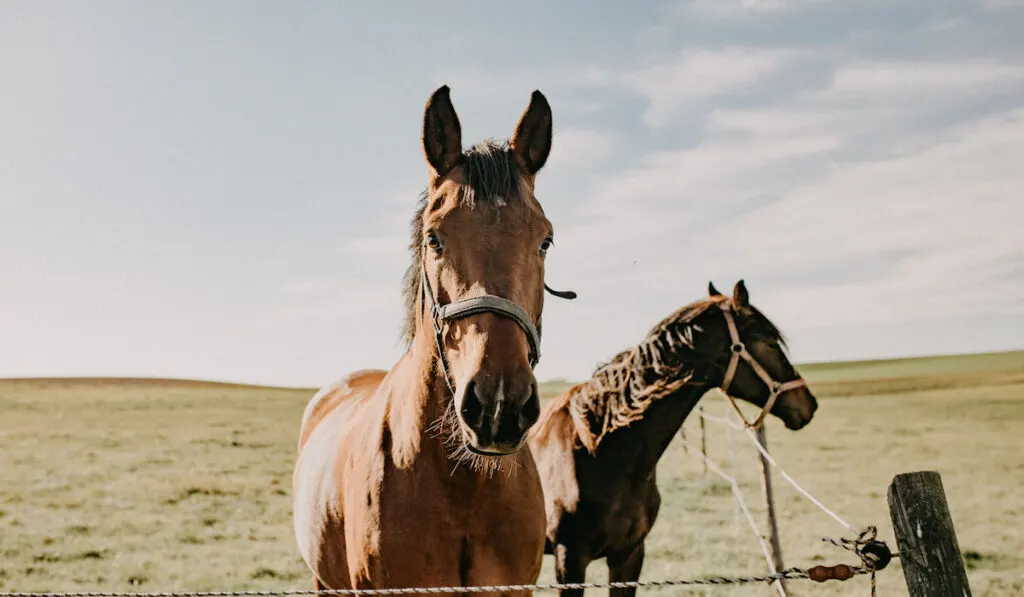
The issue of the rider-horse bodyweight ratio is a significant welfare question. The topic is a sensitive one that should be handled with compassion and tact for riders.
Riders paired with correctly sized horses will be able to ride guilt-free and enjoy their horses. The horses will be more pleasant to work with and perform better if they are pain-free.
What happens if you ride the wrong size horse?
As with anything in life, there are consequences to every decision we make.
The size of the horse we choose to ride will directly impact the horse, our success in the sport we choose to participate in, and our riding style.
Table of Contents
Heavy Rider, Small Horse
When a rider is too heavy for their horse, the horse will suffer. They will show increased stress levels and will develop pain in the back and even transient lameness.
Over time the damage will become permanent, and the horse will no longer be sound enough to ride.
A compromised horse is unable to use its body correctly, and its performance will consequently suffer.
If the horse experiences pain with every ride, it will begin protesting.
The behavioral signs may include a reluctance to be caught and tacked up, or the horse may start biting, moving away, or rearing when the rider attempts to mount.
A heavy rider may cause a horse to grunt, arch its back away from the rider, and spread its legs to maintain balance.
Once the rider is on, the horse will become increasingly resistant to rider aids and refuse to do routine activities.
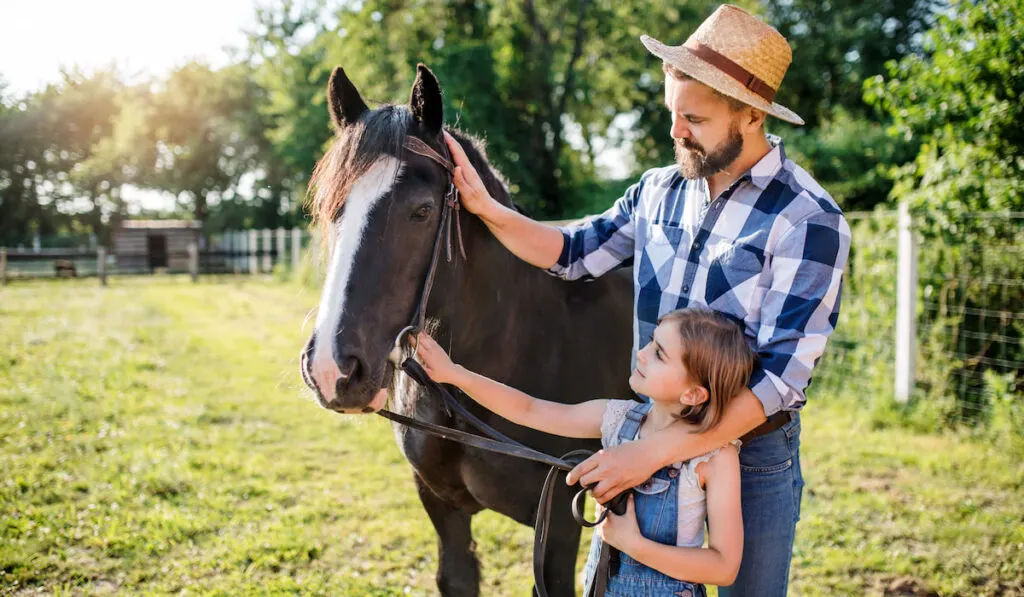
Tall Rider, Short Horse
A lightweight tall rider is unlikely to cause physical damage to the horse. However, the rider’s riding will suffer due to compensatory riding habits.
Tall riders will develop habitual leg lifting when applying leg aids or ride with very short stirrups. Each time a rider lifts their leg to touch the horse’s belly, they will need to adjust their balance.
A rider who consistently uses short stirrups will tend to lean forward. Their center of gravity is raised high above the horse’s back.
These riders will struggle to ride with an elegant upright position where a long leg position is necessary to counterbalance the torso.
Short Rider, Broad Horse
A rider with short legs on a broad horse will struggle to get their leg around the horse’s barrel. An enormous strain is placed on the hip flexor and adductor muscles.
The rider will arch their back to relieve stress on the tight muscles.
An arched spine cannot efficiently absorb the horse’s movement’s impact, unlike a neutral spine position. These riders will develop back and hip pain over time.
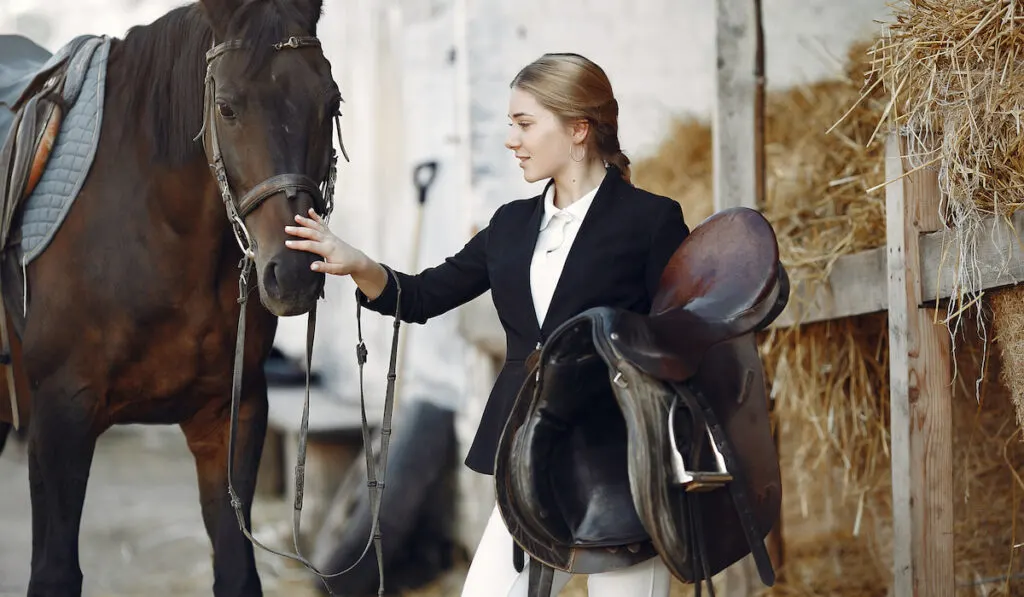
Scientific Research Into Correct Horse Size
The majority of studies are small in size. No definitive guide has been developed to determine the appropriate rider-horse ratio. Two of these studies can be viewed here and here.
A summary of both studies findings are as follows:
- Load = Tack + Rider Weight
- The load should not exceed 15% of the horse’s body weight when performing strenuous exercise.
- A horse can tolerate moderate exercise if the load is between 15% – 20% of the horse’s bodyweight.
- Rider height and saddle fit had significant implications for back pain and lameness.
- Other variables (modifiers) need to be considered when determining the weight a horse can comfortably carry.
How much can a horse carry? 16 points to consider
It is almost impossible to accurately determine a formula to govern the appropriate size horse for a rider. Most equations account for one or two variables.
They don’t provide an exhaustive analysis of all the variables that influence the appropriate horse-rider size ratio.
Factors influencing the horse’s weight-carrying ability are divided into two groups: horse-related variables and rider-related variables.
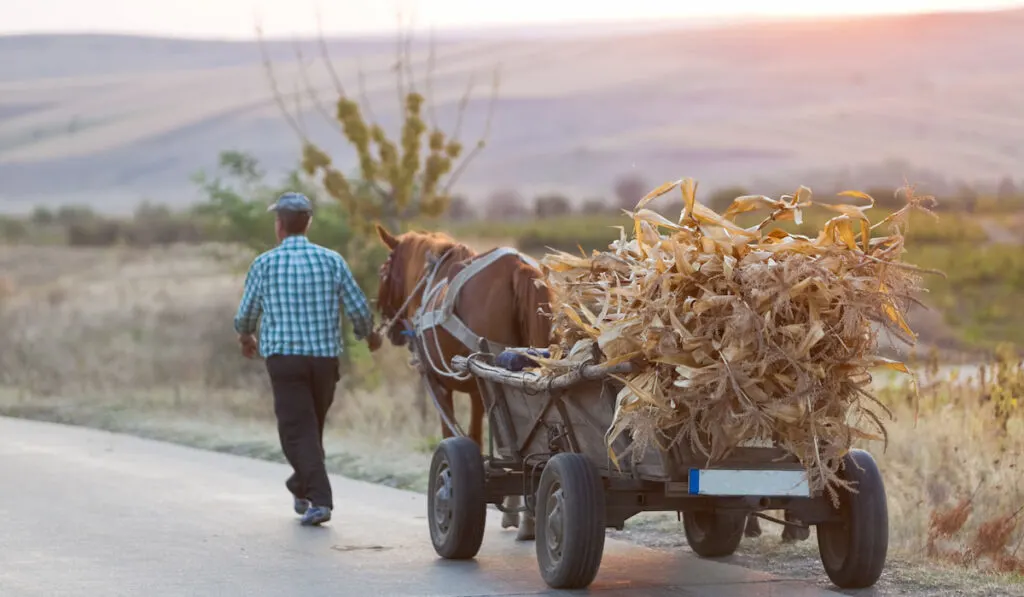
Horse-Related Variables
- Age
- Fitness
- Muscle development
- Thoracolumbar Length
- Loin width
- Cannon bone length and thickness
- The presence or absence of pre-existing lameness or spinal issues.
- The type, speed, and duration of work required.
- Riding terrain
- Saddle fit
Ride-Related Variables
- Skill
- Fitness
- Balance
- Coordination
- The relative height of the rider
- Saddle fit
Weight-Carrier Conformation
The Kentucky Equine Research Team (2008) carried out a study on the effect of specific conformational attributes on the horse’s ability to carry weight.
The four tests used a standardized riding pattern conducted at walk, trot, and canter for a preset distance followed by four days rest.
The variables investigated examined the horse’s response to carrying 15%, 20%, 25%, and 30% of their body weight relative to specific conformation traits.

The riders for each category were skilled and balanced, capable of assisting the horse in maintaining its balance and picking the correct canter lead.
- Loin width – The loin width is inversely proportional to muscle soreness when carrying heavier loads. The broader the loins, the less sore a horse was when carrying a heavier rider.
- Back length – The shorter the back, the better the horse can tolerate heavy loads; however, a short back requires a short saddle. If the saddle does not fit the rider, then the horse will experience back pain.
- Cannon bone length and circumference – The shorter and thicker the cannon bone is the greater the horses’ tolerance for carrying heavy loads.
- Height – A horse’s height was found to be irrelevant in determining weight-carrying ability. Although taller horses tend to weigh more, meaning they can carry more weight, it did not influence the body weight percentage that the horse could carry.
- Musculature – Good paraspinal musculature is an important feature that protects the spine. Well-developed musculature with a recessed spinal channel distributes rider weight over a larger surface area, reducing localized pressure and protecting the spine. While this conformation is excellent for weight-carrying, it can make saddle-fitting difficult. Many of these horses will have back pain not from rider weight but poor saddle fit.
Horse-Rider Size Ratio According To Discipline
Each riding discipline favors horses with different conformations and requires the horse to perform various activities for differing amounts of time over varied terrain.
As a result of these variations, the ideal horse-rider ratio varies.
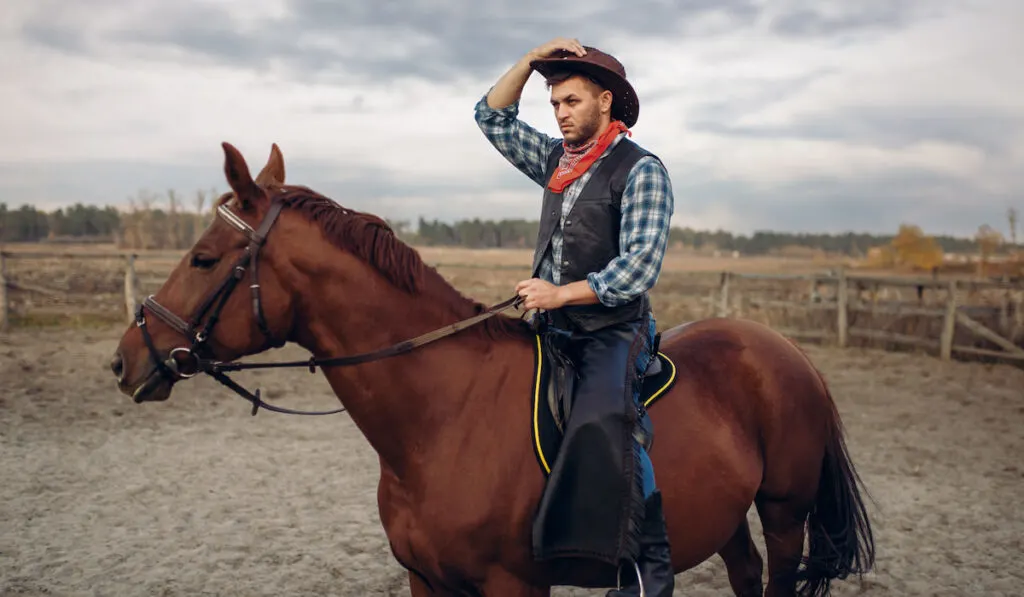
Western Riding
Western riding commonly utilizes quarter horses. These horses typically vary in height between 14.0hh and 15.0hh.
It is normal and considered acceptable to see adults, even men riding these short horses.
The short stature makes it easier to get on and off the horse multiple times during ranch work.
It improves the horse’s agility and ability to perform sharp turns, spins, and sliding stops.
A quarter horse’s conformation epitomizes ideal weight-carrier conformation.
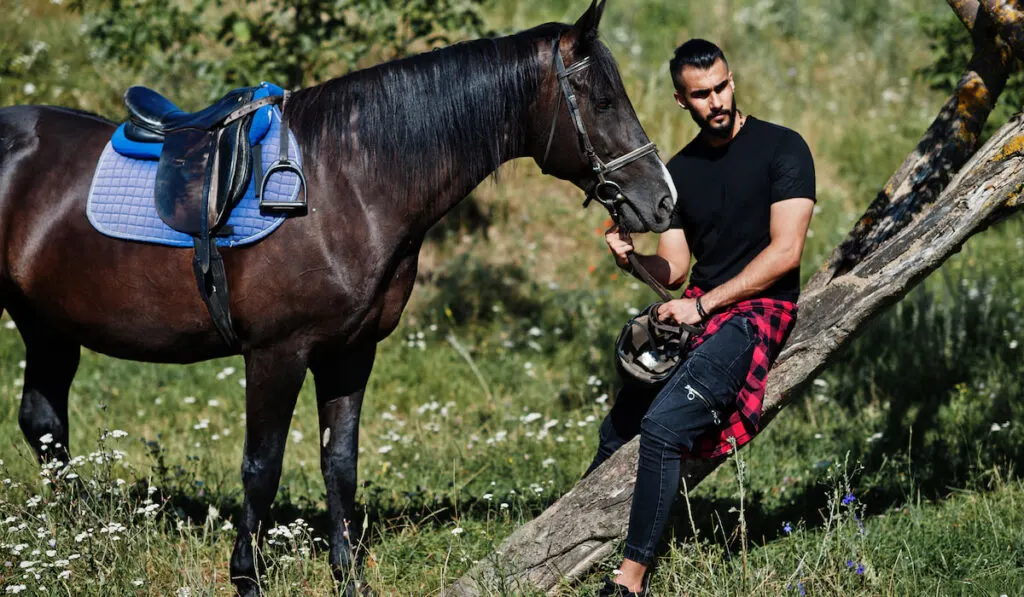
Endurance
Arabs aren’t muscled bulky weight carriers, but they usually do have short cannon bones and backs.
Arabs will often carry 20 – 30% of their body weight over 100 miles or more.
Few studies have investigated the Arabs weight-carrying ability over distance.
It may be kinder for heavyweight division riders to ride bigger, stronger part-bred Arabs.
English Riding
Many adult English riders prefer taller longer-legged light breed horses.
The horses are ideal for making the jumping distances required in showjumping and eventing. They have the presence to dominate in the dressage arena.
These sport horses are better for showjumping or dressage but are not good weight-carriers.
Thus most English riders will choose to ride a taller horse than their western counterparts.
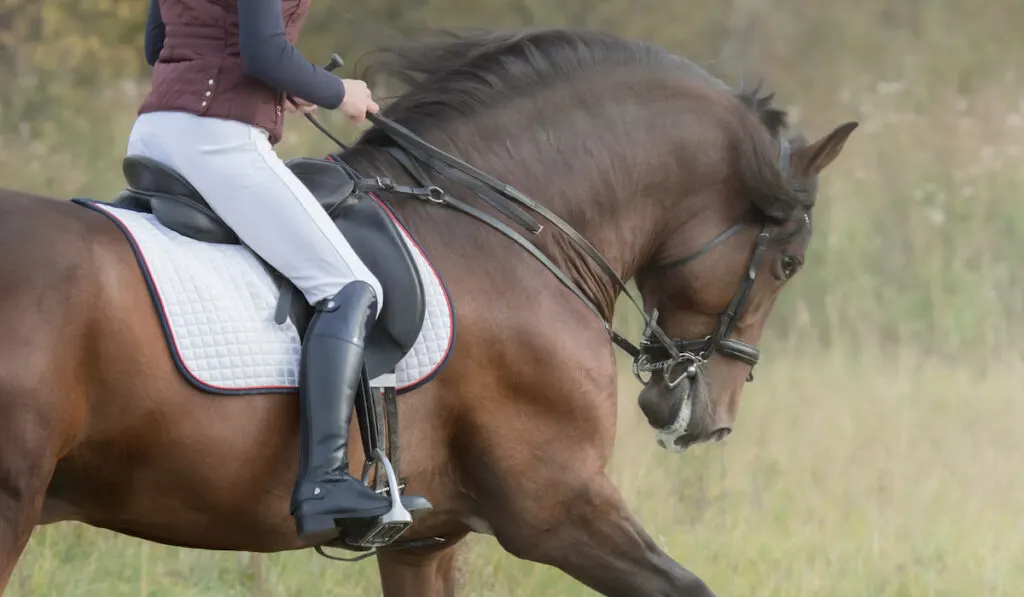
Classical Dressage
The classical dressage rider often chooses to ride an Iberian horse breed, e.g., Lipizzaner, Andalusian, or Lusitano. T
hese horses are better weight carriers than many other light breed sport horses.
The classical dressage horse is frequently worked in-hand, making a tall horse a disadvantage.
The ideal height of these horses should be 20cm shorter at the wither than the rider’s height.
The Spanish Riding School requires their riders to be approximately 172cm tall with a slim fit build. These riders ride the Lipizzaners, who have an average height of 15.2hh.
Conclusion
The topic of rider weight is sensitive. There is no definitive rule to enable an objective judgment of a horse’s weight-carrying capacity.
Multiple variables influence a horse’s ability. No single formula accounts for all of these variables.
A commonly accepted guideline is that a horse should not be required to carry more than 20% of its body weight when engaging in moderately strenuous exercise.
A critical analysis of each horse-rider combination and evaluation of observed behaviors will provide a more accurate indication of horse comfort and acceptable rider weight for that INDIVIDUAL horse.
References
- https://beva.onlinelibrary.wiley.com/doi/10.1111/eve.13085
- https://www.horseillustrated.com/horse-news-2014-10-01-too-heavy-to-ride
- https://www.horseandhound.co.uk/news/excess-rider-weight-can-cause-lameness-645906
- https://www.horsetalk.co.nz/2018/03/09/heavy-horse-consequences-pilot-study/
- https://horse-canada.com/magazine/rider-health/size-matters/
- https://good-horse.com/health-management/am-i-too-big-for-my-horse/
- https://ker.com/equinews/horses-weight-carrying-ability-studied/
- https://ker.com/equinews/horses-weight-carrying-ability-studied/
